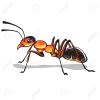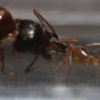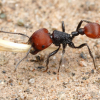There's a couple of papers I've found on Google about Temnothorax; overall they are a pretty hardy species. However, based in my experience, it's better to have at least a couple queens together for founding (I did between 2 and 4 this year of T. curvispinosus.) They are a pretty fluid species, where queens and workers move pretty freely between different colonies. They also are known to survive fairly cold temperatures for hibernation (believed to be helped by glycerol like some Camponotus), however there is usually fairly high attrition during hibernation (which is where some of this flexibility is believed to be for moving between colonies.) One article I read (I can't find at the moment), mentioned some species are believed to seek out existing colonies post mating flights, rather than found their own from scratch.
I kept a single Temnothorax curvispinosus queen last year, and she didn't make it thru hibernation. However a lot of it was my fault as the workers are so tiny, it's very easy to kill them (squishing, drying out, or drowning.) On the plus side, they were about as opportunistic as Tetramorium and ate pretty much everything I gave them.
From Antwiki:
"Nests are located in preformed cavities in structures found in the litter, e.g., in small sticks or nuts. Temnothorax longispinosus is facultatively polydomous and their nesting arrangements vary with season. In the productive summer months, colonies can fragment and be arranged across numerous nest sites. These vary in queen number, from multiple queens to those that only have workers and brood.
During the winter nests coalesce and typically are found in a single structure. In northeastern hardwoods forests this will typically be a nut (acorn, hickory) or small twig in the leaf litter. Nest mortality can be significant. From one third to one half of all nests are gone by the end of the winter. Some of these losses are colony deaths while others represent migration to a new nest site, which likely occurs during warmer winter days. (based, in part, on Herbers and Johnson 2007, Herbers 1989, Alloway 1983)
I can believe those numbers based on the several weeks of flights I saw for T. curvispinosus.
@Karma
As for me, I put my Temnothorax in a cooler, slowly dropping temps from about 60F down to 45F. I would think if she gradually cools down, she'll probably be ok. May want to keep her above 23F however (at least in my opinion) to reduce chance of freezing.
Edited by noebl1, November 22 2017 - 12:40 PM.





















